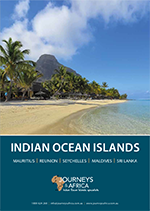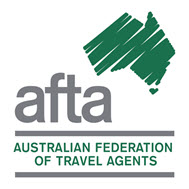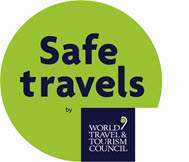CLASSIC TANZANIA
Nairobi - Nakuru - Masai Mara - 7 Days / 6 Nights
Introduction
| Start | Accommodation | Destination | Basis | Room Type | Duration |
| Day 1 | Mount Meru Game Lodge | Arusha | B&B | Double/Twin/Single Room | 1 Night |
| Day 2 | Honeyguide Tarangire Camp | Tarangire National Park | FB | Double/Twin/Single Room | 1 Night |
| Day 3 | Serengeti Kati Kati | Central Serengeti | FB | Double/Twin/Single Room | 2 Nights |
| Day 5 | Acacia Farm Lodge | Karatu | FB | Double/Twin/Single Room | 2 Nights |
Key
B&B: Bed and Breakfast
FB: Full Board – Dinner, Bed, Breakfast and Lunch
Day 1: Mount Meru Game Lodge, Arusha
Day Itinerary
After clearing with customs and Immigration formalities at the airport, you will be met by your driver guide for the short transfer to your Lodge, nestled between the peaks of Mount Meru and Mount Kilimanjaro. Spend the rest of the afternoon at leisure or visit the Game Sanctuary that has for many years provided a safe haven to African plains game.

Resting at the foot of Mount Meru, the sprawling city of Arusha is known as the safari capital of northern Tanzania. It serves as an excellent base from which to explore the remarkably scenic surrounding area which includes majestic Mount Kilimanjaro, as well as the Manyara, Tarangire and Ngorongoro National Parks. Arusha is a good spot to take a day or two off from the safari circuit as it features a temperate climate and lush surrounds. Visitors can look forward to exploring the wildlife-abundant Serengeti National Park; the magnificent Arusha National Park; and taking on the challenge of climbing Mount Meru, Africa’s fifth highest mountain.
Overnight: Mount Meru Game Lodge View iBrochure
Set in beautiful and tranquil surroundings, the Mount Meru Game Lodge is nestled between the Usa river and the sanctuary. The sanctuary is home to water buffalo, birds and monkeys, including the elusive Colobus monkey. Conveniently located just 30 minutes from Kilimanjaro International Airport (KIA), the lodge is an ideal starting point for your safari.
The lodge & sanctuary date back to 1959 when Dr. Von Nagy bought the property as a family home. The main building dates back to the 1930’s and was originally the farm manager’s house. In the first half of the 1900’s most of the area on the southern slopes of Mount Meru were coffee plantations.
Dr. Von Nagy’s was passionate about animals and he quickly turned his family home into an animal sanctuary and orphanage. He setup the Mount Meru Wildlife Reserve in order to protect the wildlife on Mount Meru, what is now part of Arusha National Park. He also helped the government to establish the Wildlife Collage and used his animal sanctuary and orphanage as a training facility for the students. His home and passion attracted visitors from far and wide, rooms were added to accommodate his visitors and the lodge was born.
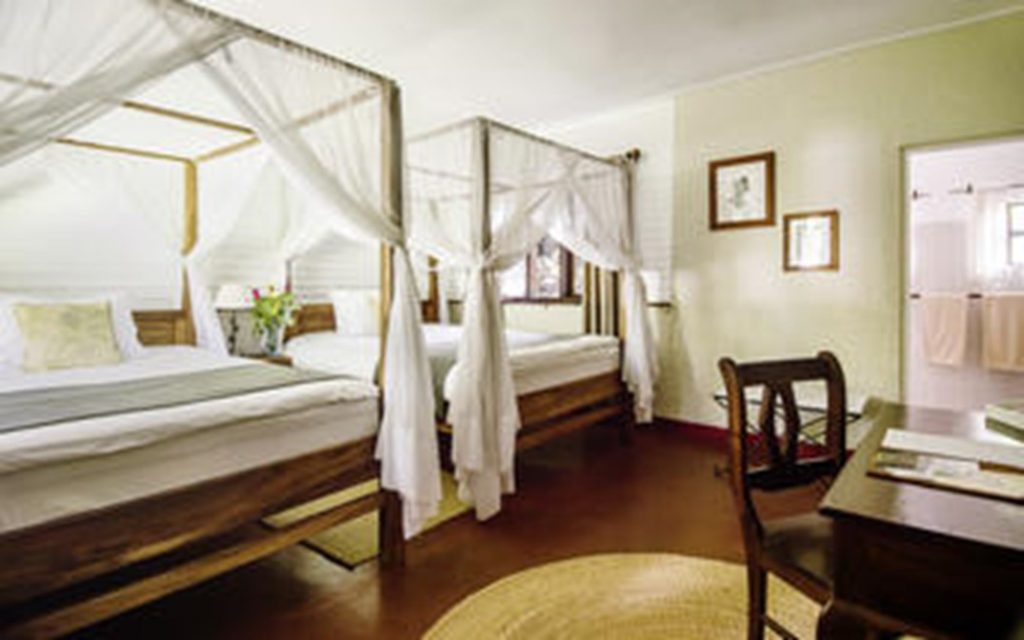
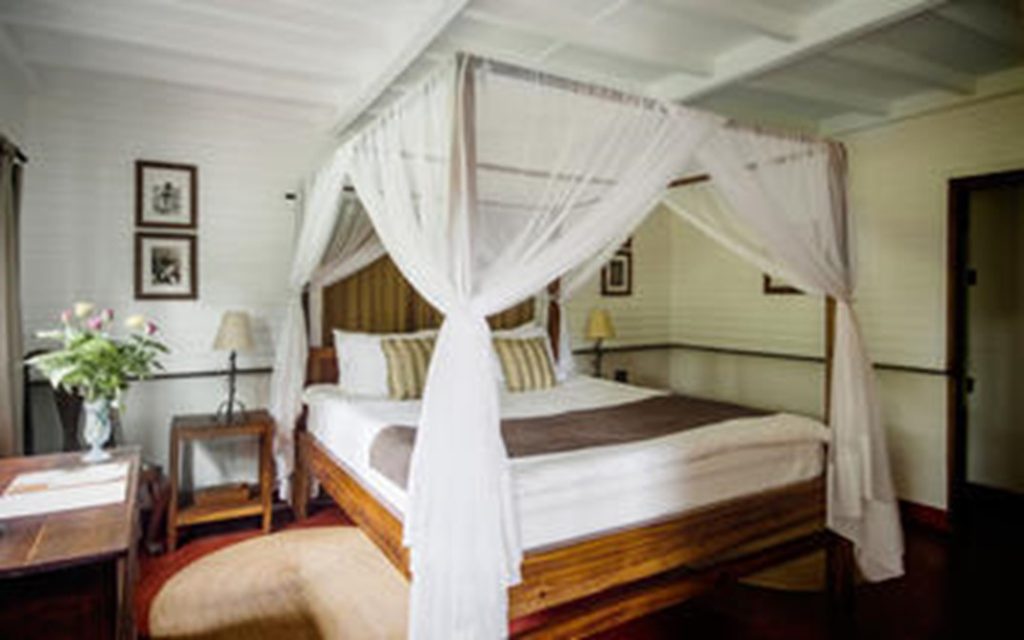
Basis
Bed and Breakfast
Day 2: Honeyguide Tarangire Camp, Tarangire National Park
Day Itinerary
This morning, wake to the views of Mt Meru before heading down to breakfast. After collecting your packed lunch, you will join your driver guide as you head to Tarangire National Park. On clearing the paperwork at the entrance, you will head into the park for a full day game drive.
As the afternoons begins to end, you will make your way back to the camp for dinner and overnight.

Tarangire National Park, situated within Tanzania’s spectacular Manyara Region, is an awe-inspiring national park comprising of granite ridges, river valleys, mixed vegetative landscapes, and free-roaming wildlife. During the annual dry season, the Tarangire River is a magnet for thirsty wildlife. Large herds of elephants and migratory wildebeest, zebra, buffalo, impala, gazelle, hartebeest and eland gather and not surprisingly the predators follow. With lion being among the most spotted animal, it is a rare day that a visitor does not spot this majestic animal prowling or grazing. Tarangire is also the one place in Tanzania where dry-country antelope such as oryx and gerenuk are seen regularly. This expansive area is also known for its spectacular baobab trees, its breath-taking views of the Masaai Steppe and the wondrous mountains to the south.
Day Itinerary
Overnight: Lake Nakuru Sopa Lodge View iBrochure
Lake Nakuru Sopa lodge is located on a range of hills that form the western limits of Africa’s great Rift valley, the Lodge offers spectacular views over the vastness of lake Nakuru and its surrounding National Park.
The park supports a wide ecological diversity with Flamingos and other water birds being the major attraction of the area. The ecosystem provides for about 56 different species of mammals including the white and black rhino, buffaloes and others.
The Lodge is 20km from the park main gate and 15 minutes’ drive from Naishi airstrip. Lodge accommodation consist of 60 rooms which include 2 inter-connecting rooms, 2 rooms accessible on wheel chair. Rooms are grouped into single, twin or triple rooms. All rooms have a clear view of the lake and you are able to view the sun rise from the balcony. All rooms have safe box, tea and coffee making facilities, mini bar is stocked on request and telephone extension are also provided in all rooms.
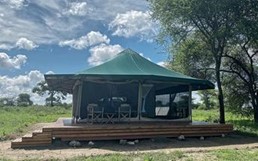
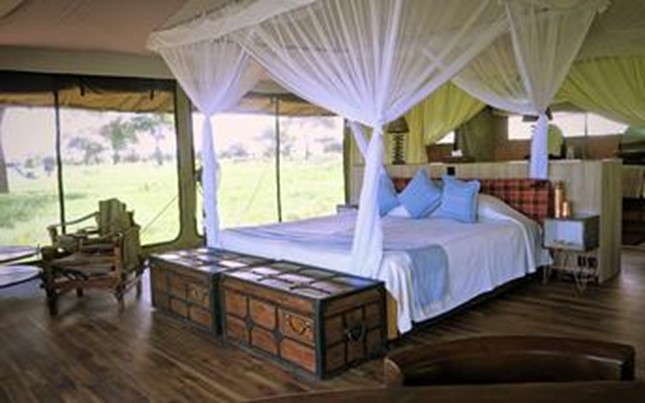
Basis
Full Board – Dinner, Bed, Breakfast and Lunch
All Local Brands (Spirits, Wine and Beers) Included
Day 3: Serengeti Kati Kati, Central Serengeti
Day Itinerary
After breakfast and check out, depart to the Serengeti with a packed lunch. On arrival into the park, game drive towards your camp.
As the afternoon begins to end, you will make your way towards your camp. On arrival you will be assisted with check in and shown your tent.

Situated in the heart of Tanzania, the Central Serengeti encompasses the world-famous Seronera Valley which is known for its prime wildlife-viewing opportunities. This picture-perfect landscape is characterised by endless stretches of savannah-covered open plains interspersed by rocky outcrops of granite and scattered with acacia woodlands and covered in a network of rivers and streams. The Central Serengeti forms part of the great wildebeest and zebra migration and provides an ideal habitat for a variety of wildlife such as giraffe, impala, waterbuck, hippo, elephant, buffalo, lion, leopard, hyena, jackal, serval and much more. Popular activities include: game viewing, cultural tours, horse riding safaris, and hot air ballooning over the spectacularly scenic terrain.
Day Itinerary
Overnight: Serengeti Kati Kati View iBrochure
Serengeti Kati Kati is a mobile tented camp located in Central Serengeti, strategically located to cover the vast Serengeti Plains. The camp offers comfortable accommodation and a unique opportunity to enjoy a real safari camp experience, just a two-hour scenic drive from Olduvai Gorge Museum and Grumeti River.
Accommodation comprises 10 double tents and with one family tent, all with en-suite facilities, with a cosy mess tent located in the centre of the camp where meals are served. The campfire is ready every evening for appetizers and snacks before dinner.
Serengeti National Park is one of the largest wildlife sanctuaries on the planet and the largest National Park in Tanzania, covering an extension of 15,000 square kilometres. Its landscapes depict the mythical image of an Africa of large spaces, profound blue skies dotted with clouds, cool sunrises and fire-red sunsets.
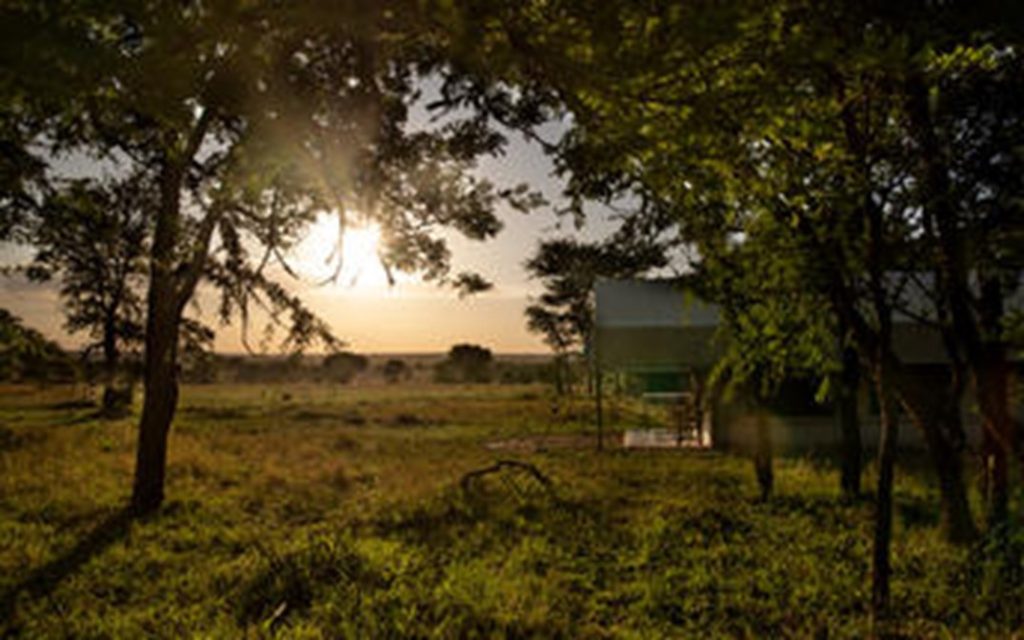
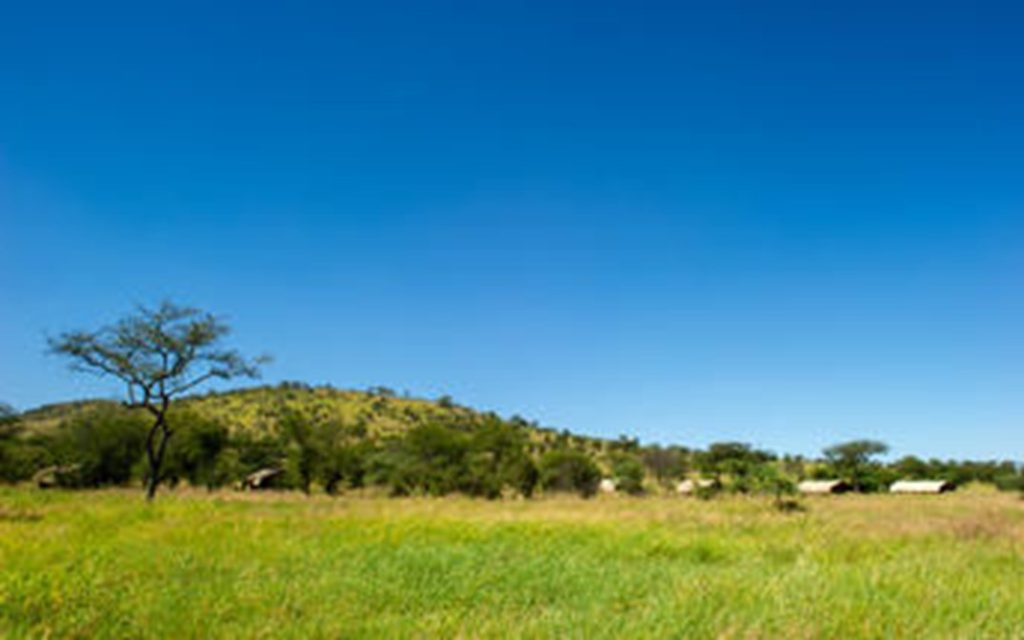
Basis
Full Board – Dinner, Bed, Breakfast and Lunch
Day 4: Serengeti Kati Kati, Central Serengeti
Day Itinerary
Enjoy a full day, with morning and evening games drives in Serengeti National Park. Enjoy quiet evenings by the campfire and the exclusivity of absolute comfort combined with the authenticity of a night spent in the African bush, an extraordinary experience for all nature lovers.
Optional
Serengeti Balloon Safaris
This morning you will be transferred early in the morning to the balloon launch site. Take off at 6:30am and float over the famous Serengeti National Park with its enchanting scenery and vistas.
This may be the most beautiful area in the world for a balloon flight. There are no power lines, fences and few roads. Our capacity is limited making this experience a special and exclusive one.
Each and every balloon flight is different and therefore an adventure. For many this is one of the high point of a safari and an experience that you will remember always.
Nakuru is a fascinating city on the shores of western Kenya’s Lake Nakuru. The capital of Nakuru County located in the Great Rift Valley, about ten kilometres from the massive Menengai Crater. A hiking trail leads up to the rim of this ancient caldera, offering bird’s eye views over the lake and surrounds, and then plunges 400 metres down to the floor below, where visitors can walk among ancient forests. Lake Nakuru National Park, surrounding Nakuru, is home to exceptional birdlife, as well as over 50 varieties of mammals including lion, leopard, buffalo, zebra, giraffe, rhino, antelope and various primates. History and culture enthusiasts should make sure to visit the incredible Hyrax Hill prehistoric site.
Overnight: Serengeti Kati Kati View iBrochure
Serengeti Kati Kati is a mobile tented camp located in Central Serengeti, strategically located to cover the vast Serengeti Plains. The camp offers comfortable accommodation and a unique opportunity to enjoy a real safari camp experience, just a two-hour scenic drive from Olduvai Gorge Museum and Grumeti River.
Accommodation comprises 10 double tents and with one family tent, all with en-suite facilities, with a cosy mess tent located in the centre of the camp where meals are served. The campfire is ready every evening for appetizers and snacks before dinner.
Serengeti National Park is one of the largest wildlife sanctuaries on the planet and the largest National Park in Tanzania, covering an extension of 15,000 square kilometres. Its landscapes depict the mythical image of an Africa of large spaces, profound blue skies dotted with clouds, cool sunrises and fire-red sunsets.


Basis
Full Board – Dinner, Bed, Breakfast and Lunch
Day 5: Acacia Farm Lodge, Karatu
Day Itinerary
After breakfast and check out – depart with a packed lunch and drive towards the Ngorongoro Conservation Area. On the way you will one of the world’s most important prehistoric sites, Olduvai Gorge, for a tour and lecture. Learn how the gorge was vital in establishing the African origin of humankind and in turn, why it is referred to as the ‘Cradle of Mankind’. Proceed on to the Ngorongoro Conservation Area and on clearing the paperwork you will drive through the Crater Rim from where you will have the opportunity – weather permitting – to see the Crater, in all its glory. Drive onto your Lodge, located in lush grounds within the Karatu Area. On arrival you will be assisted with check in and shown your room

Optional
Travellers heading for the Serengeti and Ngorongoro Crater will pass through the town of Karatu in the green hills of Tanzania’s northern highlands. Presided over by the towering Ol Deani Volcano, this small, colourful town serves as a popular overnight stop for visitors exploring the area’s many game parks. The town offers a variety of activities including browsing the bustling marketplace, sampling beer at a local brewery, visiting a traditional homestead, or taking a guided walk through the Ngorongoro Forest in search of waterfalls and caves. Whether you are looking for cultural tours, hiking and biking opportunities, a chance to enjoy an authentic rural Tanzania experience, or simply a break between safari game drives, this underrated town has plenty to offer.
Nakuru is a fascinating city on the shores of western Kenya’s Lake Nakuru. The capital of Nakuru County located in the Great Rift Valley, about ten kilometres from the massive Menengai Crater. A hiking trail leads up to the rim of this ancient caldera, offering bird’s eye views over the lake and surrounds, and then plunges 400 metres down to the floor below, where visitors can walk among ancient forests. Lake Nakuru National Park, surrounding Nakuru, is home to exceptional birdlife, as well as over 50 varieties of mammals including lion, leopard, buffalo, zebra, giraffe, rhino, antelope and various primates. History and culture enthusiasts should make sure to visit the incredible Hyrax Hill prehistoric site.
Overnight: Acacia Farm Lodge View iBrochure
Acacia Farm Lodge is a romantic Country Lodge nestled in an active mixed farm located high on the spectacular Great Rift’s escarpment area with commanding panoramic views of the amazing Karatu farmlands and the nearby Ngorongoro forest area. Unrivaled area’s natural beauty is finely complemented by the elegant lodge. A timeless tranquility emanates from the exuberance of birdsong, mature trees, and the lovely coffee plants.
Acacia Farm Lodge is strategically located between the Tarangire and Lake Manyara National Parks on one side and Ngorongoro Conservation Area and Serengeti National Park on the other, this is a perfect base from which to explore these world-famous reserves as well as enjoy many other adventurous activities and impressive cultural experiences
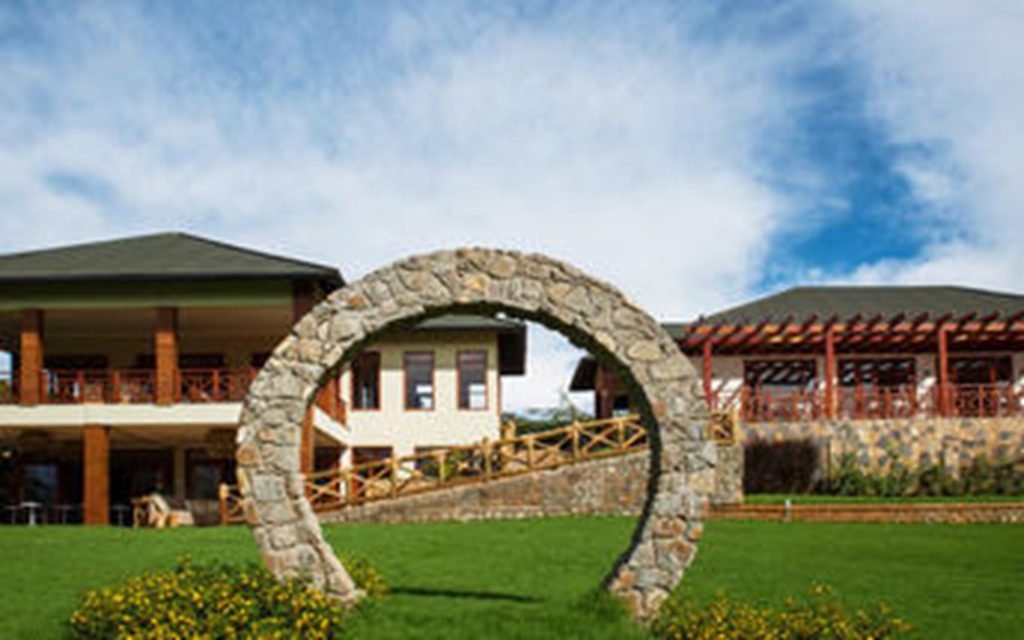
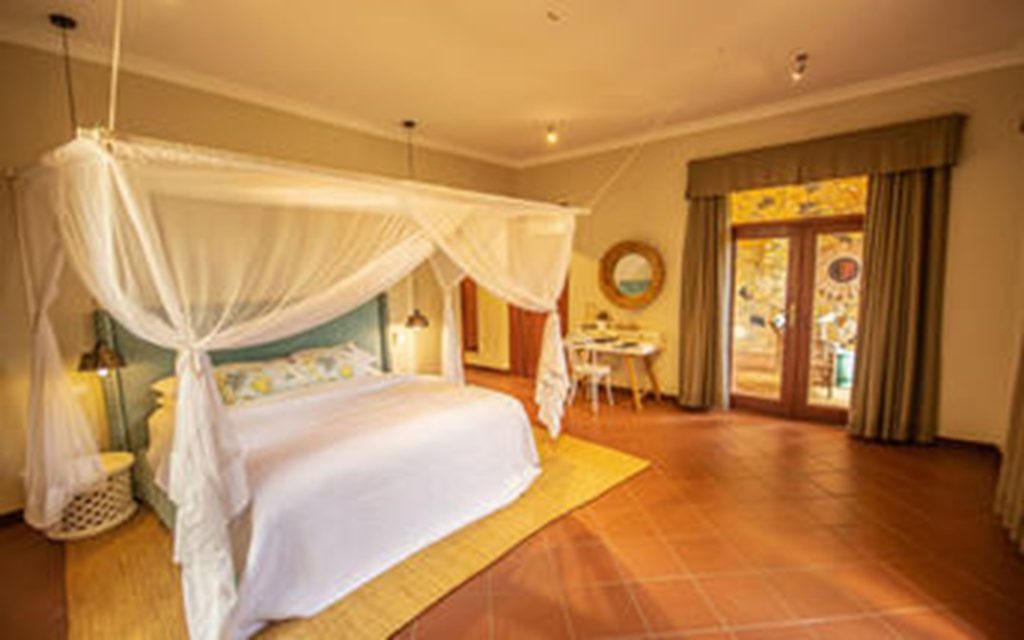
Activities
Ngorongoro Crater
Located in Northern Tanzania, the Ngorongoro Crater is best known for its natural beauty and abundance of diverse wildlife; which makes it one of Africa’s most popular safari destinations. Surrounded by Tanzania’s highlands, this UNESCO-listed crater is said to be the world’s largest intact volcanic caldera. Visitors can look forward to spotting the world-renowned Big Five and a host of other wildlife species including large herds of zebra and wildebeest. It is famed as one of Tanzania’s best tourist attractions offering visitors an array of wonderful activities including excellent bird watching, trekking, wildlife viewing, mountain biking and visiting a local Maasai village. Don’t miss the opportunity to jump on an excursion to the magnificent Olduvai Gorge.
Basis
Full Board – Dinner, Bed, Breakfast and Lunch
Day 6: Acacia Farm Lodge, Karatu
Day Itinerary
Get up early to make the most out of your day in the Ngorongoro Crater with lunch boxes. Return to your lodge before dusk, and in time to freshen up before dinner.

Activities
Ngorongoro Crater
Ngorongoro Crater
Located in Northern Tanzania, the Ngorongoro Crater is best known for its natural beauty and abundance of diverse wildlife; which makes it one of Africa’s most popular safari destinations. Surrounded by Tanzania’s highlands, this UNESCO-listed crater is said to be the world’s largest intact volcanic caldera. Visitors can look forward to spotting the world-renowned Big Five and a host of other wildlife species including large herds of zebra and wildebeest. It is famed as one of Tanzania’s best tourist attractions offering visitors an array of wonderful activities including excellent bird watching, trekking, wildlife viewing, mountain biking and visiting a local Maasai village. Don’t miss the opportunity to jump on an excursion to the magnificent Olduvai Gorge.
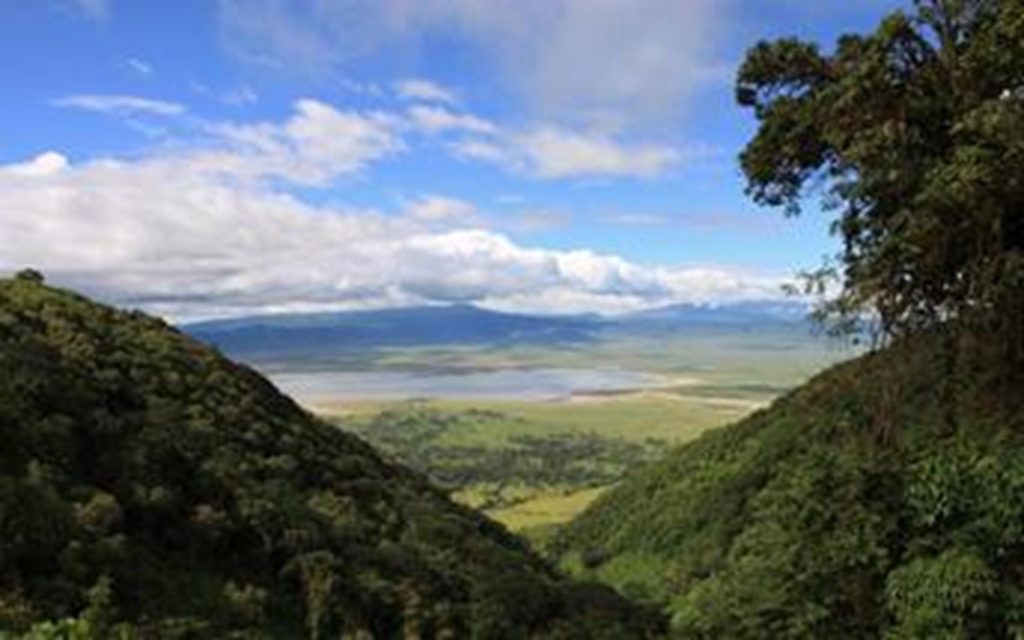
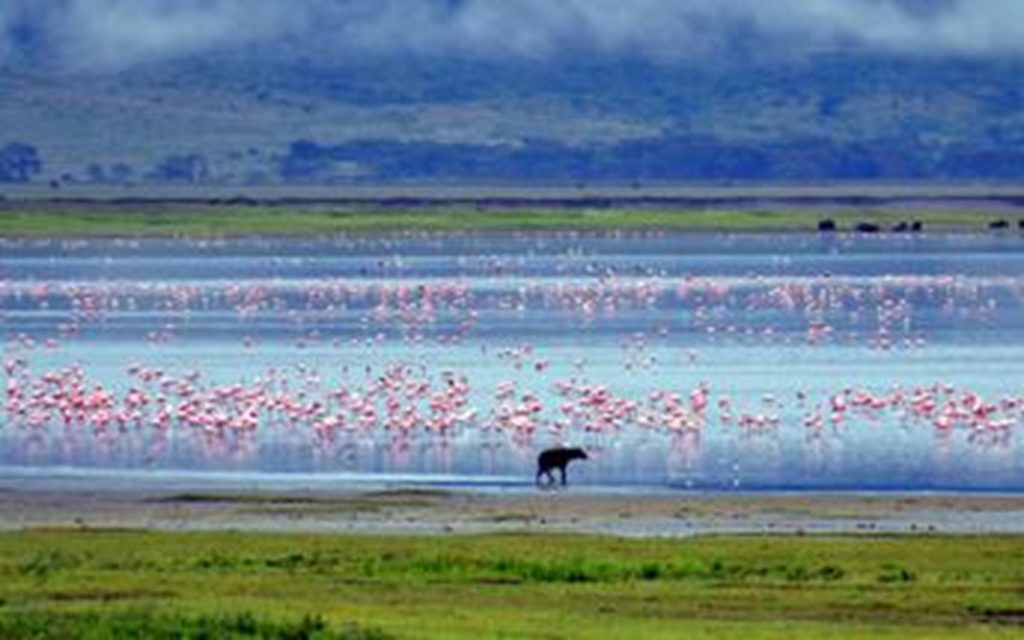
Basis
Full Board – Dinner, Bed, Breakfast and Lunch
Day 7: End of Itinerary
Day Itinerary
After breakfast and check out and drive to Lake Manyara National Park with lunch boxes for morning game drives.

Activities
Lake Manyara National Park
Situated in Tanzania’s central-northern region with the Lake Manyara to its east and the Manyara Escarpment to its west, the Lake Manyara National Park offers breath-taking views and a large variety of habitats supporting an array of wildlife. This small park is home to surprising biodiversity and features a magnificent landscape of acacia woodlands, forests, baobab strewn cliffs, algae-streaked hot springs, swamps and the lake itself. The park supports over 400 species of bird and the largest concentration of baboons anywhere in the world. Other species to spot include giraffes, zebras, wildebeest, impala, waterbuck, warthog, the Cape clawless otter, and the Egyptian mongoose. Don’t miss the opportunity to see thousands of flamingos on the lake, the renowned tree-climbing lions, and large families of elephants strolling through the forest.
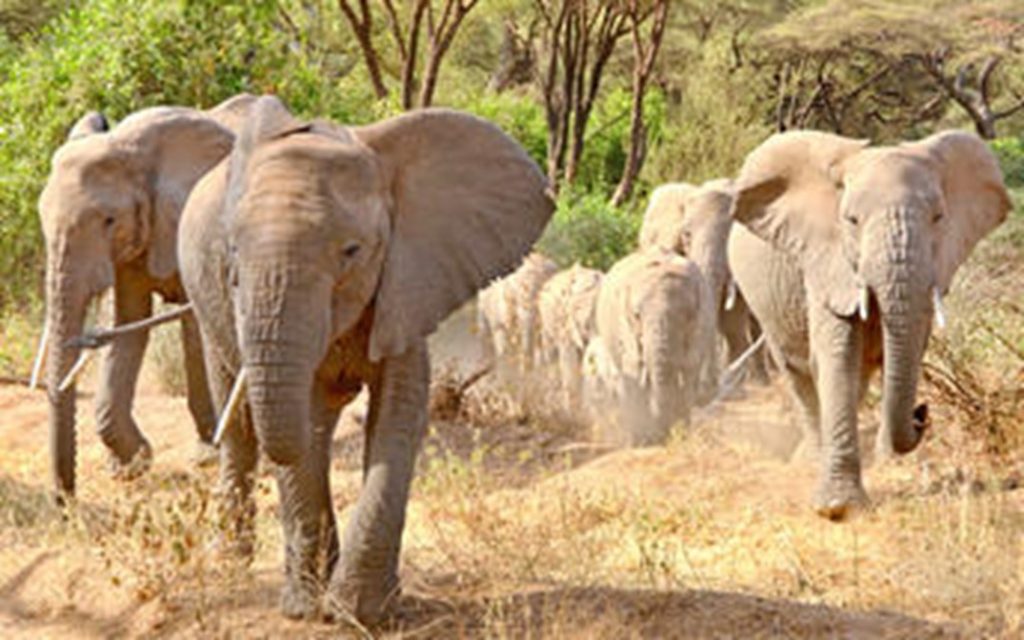
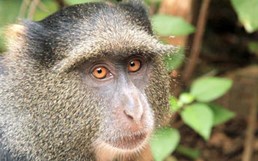
At a time, convenient to you, you will depart from the park and make your way to Arusha then transfer to Kilimanjaro International Airport for your flight back home. End of Albatros Travel Tanzania services.
Basis
Bed & Breakfast
- EASTER & XMAS AND NEW YEAR RATES INCLUDE ALL SUPPLEMENTS
- CAN BE COMBINED WITH TANZANIAN GROUP DEPARTURE. SEE KT1 2024
- PLEASE NOTE ALL DEPARTURES REQUIRE A MINIMUM OF 2 PEOPLE TO OPERATE
DEPARTURE DATES FOR 2024:
| 13-Jan-24 | 18-May-24 | 20-Jul-24 | 12-Oct-24 |
| 27-Jan-24 | 08-Jun-24 | 27-Jul-24 | 26-Oct-24 |
| 10-Feb-24 | 15-Jun-24 | 10-Aug-24 | 09-Nov-24 |
| 17-Feb-24 | 22-Jun-24 | 24-Aug-24 | 07-Dec-24 |
| 09-Mar-24 | 29-Jun-24 | 31-Aug-24 | 22 Dec 2024 (Xmas ) |
| 27-Mar-2024(Easter) | 06-Jul-24 | 14-Sep-24 | 27Dec 2024 (NY ) |
| 13-Apr-24 | 13-Jul-24 | 28-Sep-24 |
Included
- Full board accommodation while on safari
- Bed and breakfast accommodation in Arusha
- Airport transfer from JRO to Mt Meru Lodge on day 1
- Airport transfer to Arusha Airport on day 7 (JRO airport transfer is a $ vehicle supplement)
- A safari briefing at the start.
- All game drives viewing in a custom built 4×4 Safari Land Cruiser safari vehicle driven by a professional English-speaking driver guide.
- Excursions and scheduled activities as per the itinerary
- Park Entrance fees throughout
- Flying doctors’ medical evacuation cover
- I litre of water per person per day while in an Albatros safari vehicle
- Current Government taxes and levies
- Full board accommodation, House wine, local beer and spirit, soft drinks – Honeyguide camp
Excluded
- International Airfares
- International and domestic departure tax
- JRO airport transfer on day 7 ($120 per vehicle supplement)
- Laundry services
- Meals and excursions not described in the itinerary above.
- All alcoholic & Non-alcoholic drinks
- Entry Visas to the country
- Travel and health insurance
- Balloon flight in the Serengeti (additional charge USD545 per person)
- Any optional tours or excursions not mentioned in the itinerary above.
- Gratuities (tips) to your guide, hotel staff and porters
- Any other items of a personal nature, such as drinks, laundry, telephone and postage.
Transfers
| Pick Up | Drop Off | Vehicle |
| Kilimanjaro International Airport [JRO] | Mount Meru Game Lodge | Transfer |
| Mount Meru Game Lodge | Honeyguide Tarangire Camp | Transfer |
Travel Information

The name Tanzania conjures up images of wildebeest stampeding across vast savannah, rain forests teeming with monkeys and birdlife, and great plains brimming with legions of game. All of these natural wonders and more are on offer in this exceptionally diverse African nation. Visitors typically visit Tanzania to partake in at least one of the four well known Tanzanian tourist experiences: a relaxing seaside vacation on the picturesque island paradise of Zanzibar, an underwater tour of some of the world’s most renowned dive sites around the gorgeous Spice Islands, a safari adventure in some of Africa’s most impressive game reserves, or a hiking excursion around Mount Kilimanjaro National Park. Whichever of these incredible holidays you choose, you will undoubtedly be welcomed by some fabulously friendly and peaceful inhabitants who, despite being divided into 120 different ethnic groups and cultures, live in harmony with one another and provide some of the most wonderfully exotic local cuisine you could imagine. With all of this diversity on offer, the most difficult part of your Tanzanian holiday experience is likely to be deciding where to go!
Banking and Currency
Currency
In Tanzania, the unit of currency is the Tanzanian Shilling, which is divided into 100 Cents. Notes are issued in denominations of 500, 1000, 2000, 5000, and 10000 Shillings. Coins are issued in denominations of 50, 100 and 200 Shillings.
Banking
Banks are open from 9:00am to 3:00pm Monday to Friday. Many banks are equipped with 24 hour ATM machines.
Credit cards and travellers checks are not widely accepted in Tanzania. Where they are accepted can high service fees and poor exchange rates be expected. Major foreign currencies – particularly US $ – are accepted in Tanzania and are convertible at banks and bureau de changes in the main towns and tourist areas. If bringing cash in US $, please make sure bank notes are in good condition, with no cuts or damage and are not older than 2006. Most banks offer higher exchange rates for US $ 100 / US $ 50 bank notes compared to US $ 20 / US $ 10 or US $ 5 bank notes.
Travel, Transport and Getting Around
If you are visiting a number of parks and reserves in Tanzania, you can either drive or fly between them. Roads in most of the wilderness areas are in poor condition and unmarked, and self-driving is not recommended. Operators will supply you with a driver who doubles as an informal guide; alternatively, you can arrange to fly to your destination and utilize a car and driver supplied by the lodgings. Elsewhere in Tanzania, towns and cities are linked by a steady stream of buses and dala-dalas (minibuses), and in the cities, there is public transport in the way of buses, dala-dalas, taxis, and, in some places, bicycles or tuk-tuks.
Precision Air run regular services, mostly via Dar es Salaam, Kilimanjaro or Zanzibar, to all main towns and other destinations in East Africa and beyond. All national parks and some of the top-end luxury lodges have airstrips and Coastal Air operates between these and the main airports on the mainland and the islands of Zanzibar, Pemba and Mafia. ZanAir has frequent connections between Zanzibar, Pemba and the mainland.
Driving is on the left hand side of the road
Food, Drink and Cuisine Advice
Most camps, lodges or hotels cater specifically to tourists and serve Western-style food, ranging in standard, but generally are excellent. Game lodges tend to offer a daily set menu with a limited selection, so it is advisable to have your tour operator specify in advance if you are a vegetarian or have other specific dietary requirements. First-time visitors to Africa might take note that most game lodges in and around the national parks have isolated locations, and driving within the parks is neither permitted nor advisable after dark, so that there is no realistic alternative to eating at your lodge.
Tap water in Tanzania is generally not safe to drink, and most travellers try to stick to mineral water. Filtered and bottled water can be difficult to find you are travelling outside of main town and so it is advisable to stock up. Most camps, lodges and hotels have bottled water readily available.
Please note that, as of 2016, Tanzania has banned the use of plastic bags in a bid to tackle pollution and protect the environment. Travellers’ to Tanzania will no longer be allowed to bring plastic carrier bags into the country. This ban targets all plastic bags that are imported, exported, manufactured, sold, stored, supplied and used
Climate and Weather
Just south of the equator, Tanzania is huge and its sheer size means that the climate varies considerably within it. However, generally the main rainy season, or the ‘long rains’, lasts during about March, April and May. Afternoon tropical downpours are the norm – which are heavier and more predictable beside the coast and on the islands. The humidity is high and daily temperatures reach the low-mid 30°s.
The long dry season lasts throughout June, July, August, September and October is when rainfall is unusual, even on the islands. Temperatures vary hugely with altitude and location, but it’s usually a fine, clear sky and sunny weather – it’s a great time to visit Tanzania. During November and December there’s another rainy season: the ‘short rains’. These are much lighter than the main rains and less reliable.
If it has rained during the short rains, then it normally dries up for a few months, January and February, which is Tanzania’s ‘short dry season’, before starting to rain again in earnest in March.
Clothing and Dress Recommendations
It never gets really cold in Tanzania so lightweight clothing, preferably cotton or linen, is recommended. While on a game viewing safari, avoid brightly coloured clothing, stick to whites, beiges, khakis and browns. There may be long days sitting in safari vehicles, so it is advisable to wear light comfortable clothing such as short sleeved shirts and cotton/linen trousers or shorts. Denim will become too hot and extremely uncomfortable. Walking shoes and socks will be required.
The evenings will be chilly, so long sleeved shirts and trousers should be worn. A sweater may be needed. These will also prevent you being bitten by insects. A hat should be worn at all times outside. The sun may sometimes not feel hot, but it can still easily burn, especially if it is cloudy and overcast.
If visiting Zanzibar or any coastal town don’t forget to take a swimsuit, as it is invariably warm. Ladies are recommended to take cotton skirts, blouses and dresses. Sandals are a must for this environment! On the beaches and within the confines of hotels, normal swimwear is acceptable but nudity is not.
As over a third of the population in Tanzania is Muslim, it is therefore not etiquette for ladies to walk around in public displaying their legs and shoulders. Remember to dress modestly as short shorts, miniskirts, vests and tank tops will be frowned upon.
Internet Availability
Tanzania has good Internet Service Providers with email and internet services offered by many hotels and lodges (free / paid). In most towns there are plenty of private business centres and cyber cafes offering email and internet access, although the speeds might be somewhat slower than what you are used to.
Electricity and Plug Standards
Electrical sockets in Tanzania are one of three: Type G (BS-1363) and Type C (CEE 7/16 Europlug) and Type D (BS-546) electrical socket types: If your appliance’s plug doesn’t match the shape of these sockets, you will need a travel plug adapter in order to plug in. Travel plug adapters simply change the shape of your appliance’s plug to match whatever type of socket you need to plug into. If it’s crucial to be able to plug in no matter what, bring an adapter for all types.
Electrical sockets in Tanzania usually supply electricity at 230 volts AC / 50 Hz frequency. If you’re plugging in an appliance that was built for 230 volt electrical input, or an appliance that is compatible with multiple voltages, then an adapter is all you need. If your appliance isn’t compatible with 230 volts, a voltage converter will be necessary.

